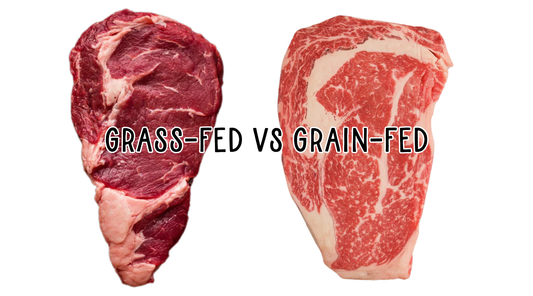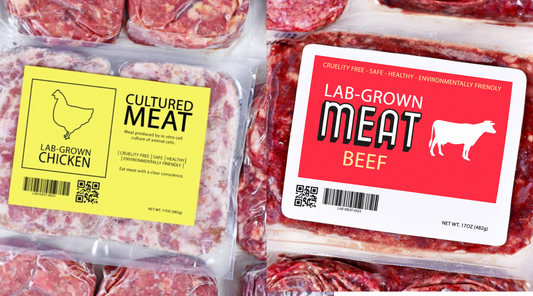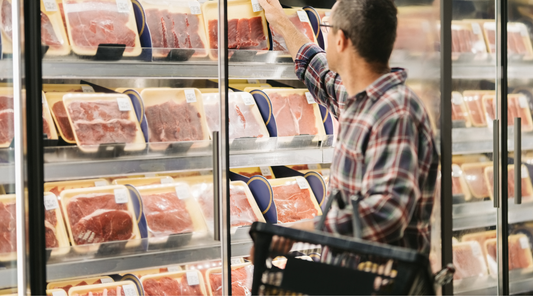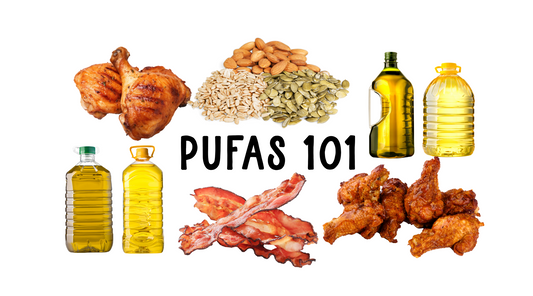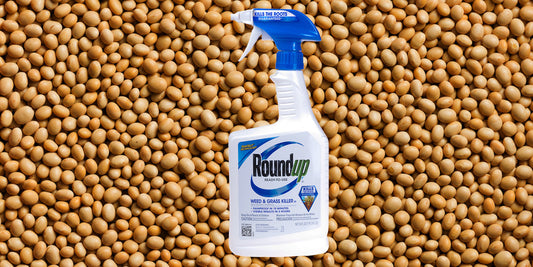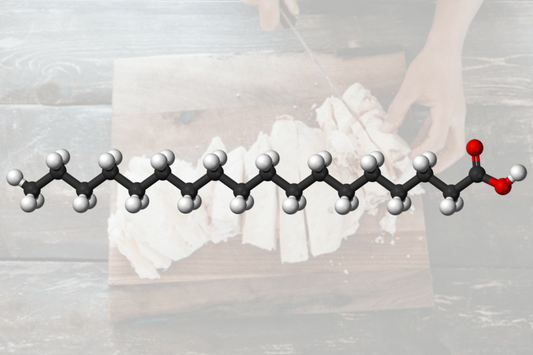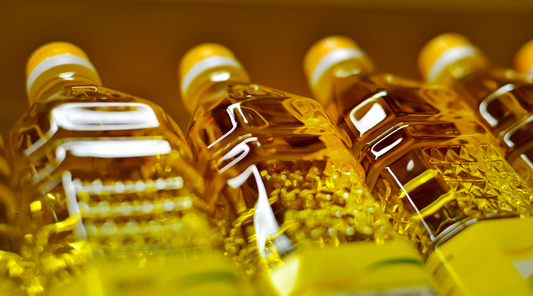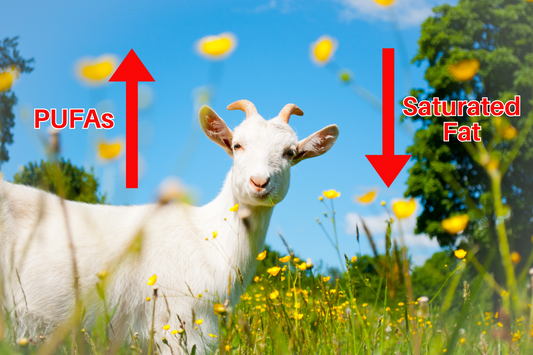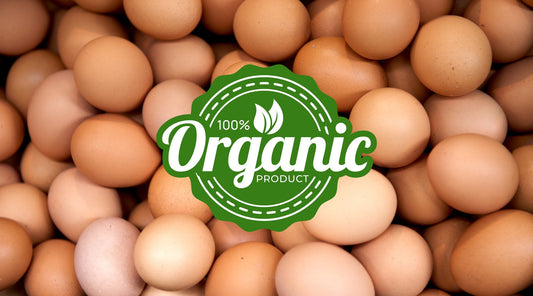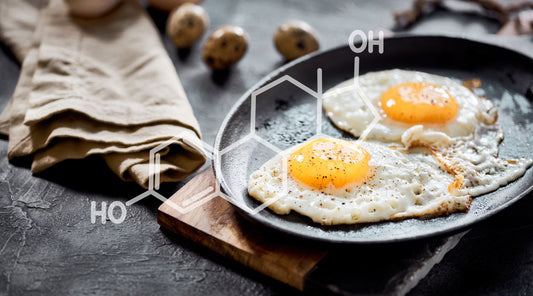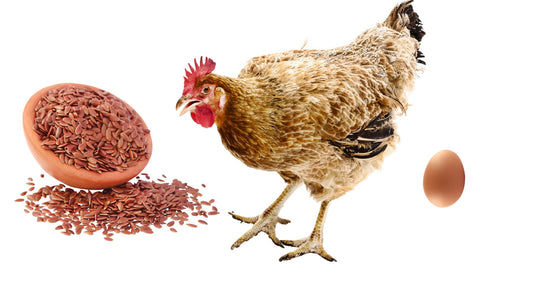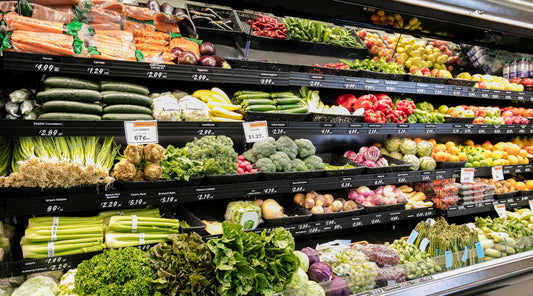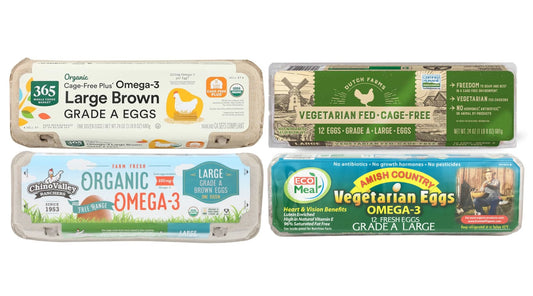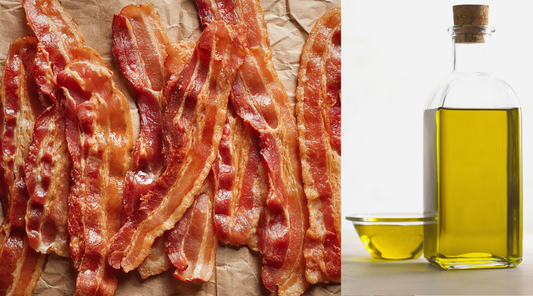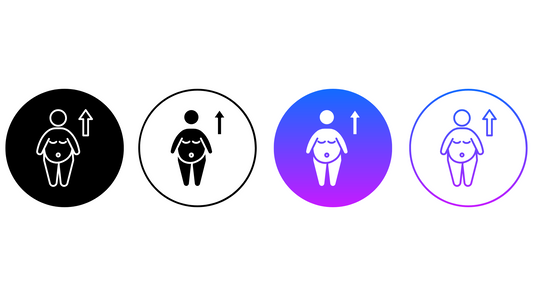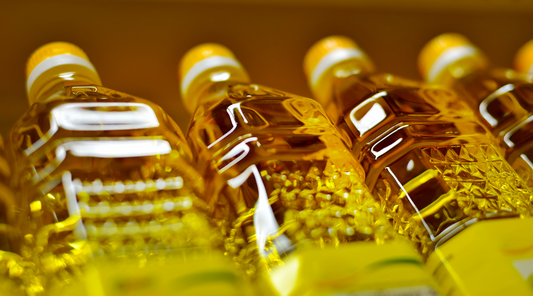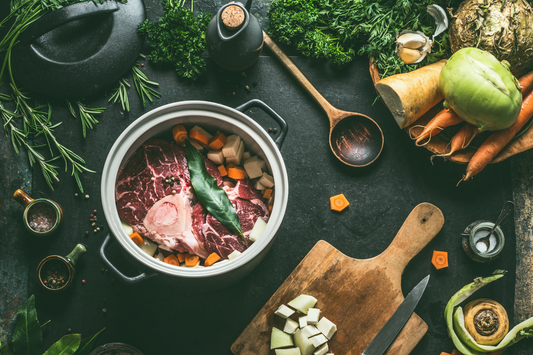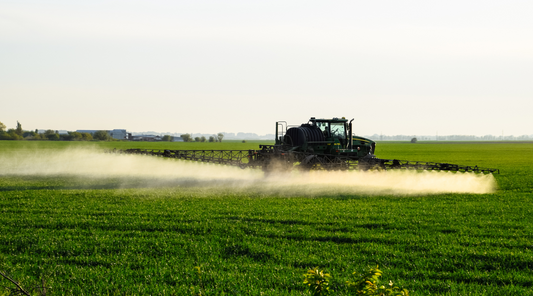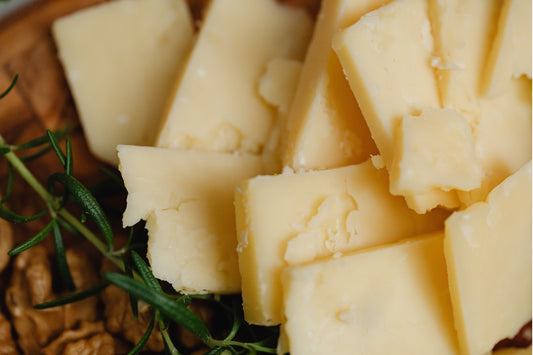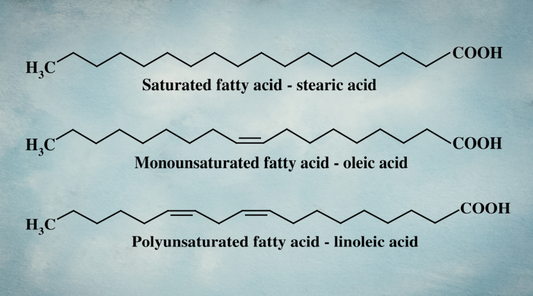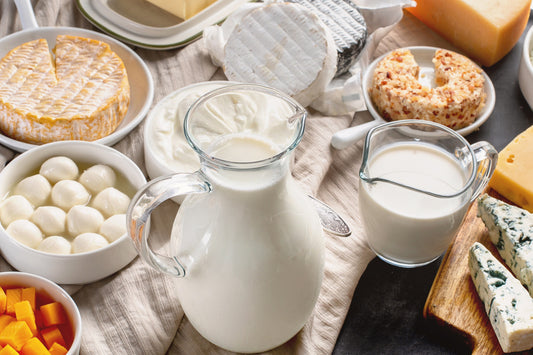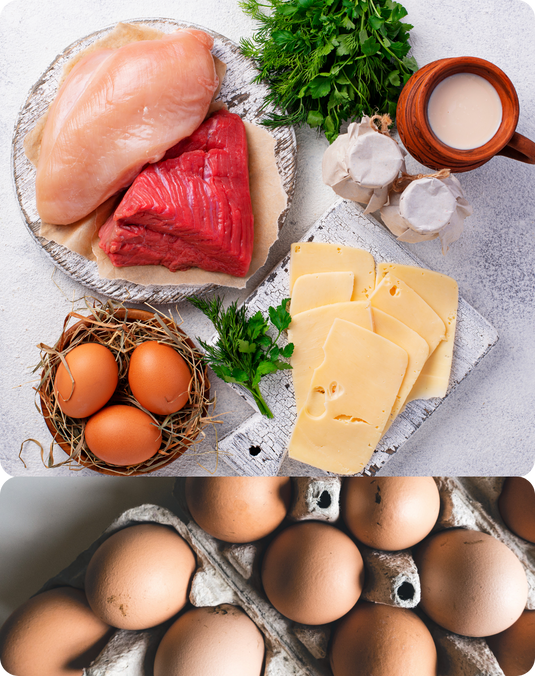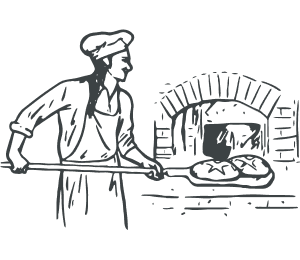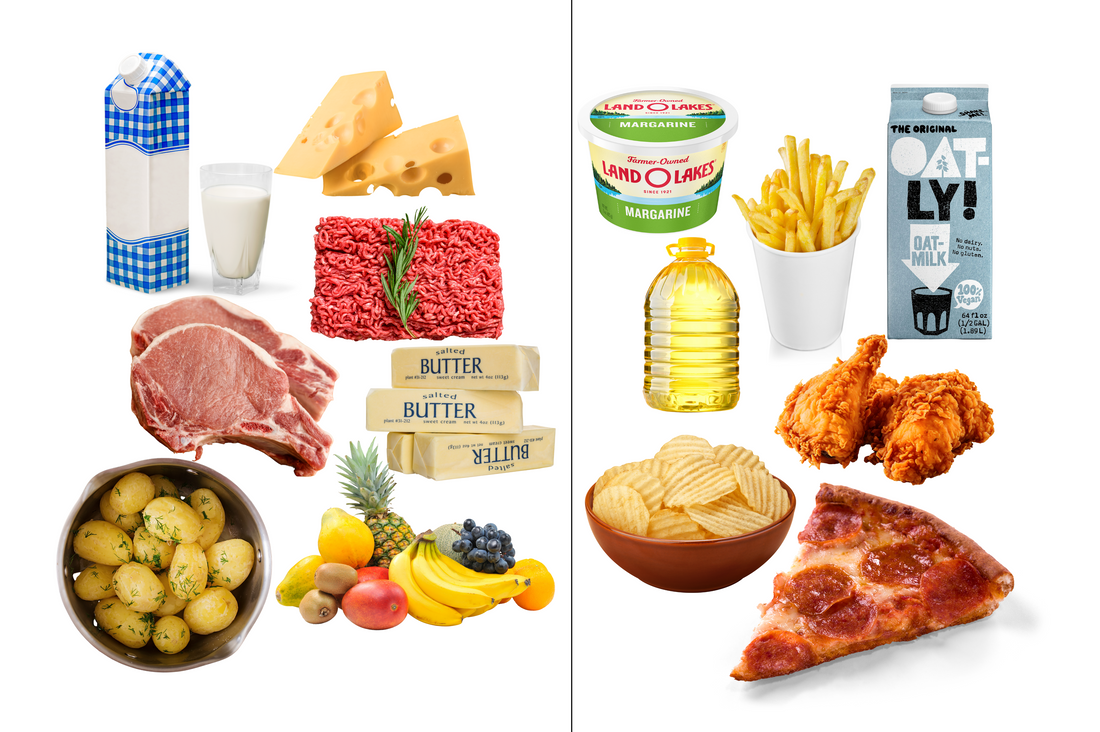
Best Low PUFA Foods for Metabolic Health: What to Eat & What to Avoid
We’ve swapped traditional saturated fats for modern unsaturated ones, and now our biology, our metabolism, and our waistlines are paying the price.
The type of fat you eat doesn’t just influence the type of fat your body uses for energy or stores. It impacts your basal metabolic rate, your energy levels, your hormonal function, and whether your body is more inclined to burn fuel—or store it. And thanks to drastic changes in our food system over the past century, the average intake of polyunsaturated fats, especially linoleic acid (an omega-6 PUFA), is now exponentially higher than at any point in human history.
In 1900, plant-based PUFAs made up just 1–2% of daily caloric intake. Today, they make up 15% or more, a 5–6x increase that is directly contributing to metabolic dysfunction, inflammation, and chronic disease.
The ratio of saturated to unsaturated fats in our diets has completely flipped.
Traditional saturated fats like butter, tallow, and dairy cream have been pushed aside in favor of industrial seed oils rich in polyunsaturated fats like canola, soybean, corn, sunflower, and safflower oils.
At the same time, animal products from corn- and soy-fed livestock have quietly become PUFA delivery vehicles since we’ve changed their diets, too.
But this shift hasn’t just changed what’s on our plates…it’s changed us.
Because dietary fat isn’t just fuel, it becomes part of our cell membranes and structures, influences hormone production, and sends critical metabolic signals. When we changed the fats we eat, we unknowingly rewired how our bodies function and our internal fatty acid make up.
We’ve slowed our metabolic rates, ramped up fat-storing enzymes, impaired mitochondrial function, and made it much easier to gain weight.
The good news? You can change this.
This post will walk you through why PUFAs are a problem, where they hide, and the best low PUFA foods to support your metabolism and hormones.
Our Ancestors Didn’t Eat This Way
They thrived on diets containing traditional fats that were higher in saturated fats. These fats supported a faster metabolism, more efficient energy production, and helped maintain a leaner physique. If we want to support our metabolic and hormonal health today, we need to return to those ancestral principles.
And that begins by focusing on the types of fat you eat, not just the total amount.
So, Where Do PUFAs Hide in Food?
First, it’s important to understand that PUFAs are only relevant in foods that contain fat. Pure carbohydrate foods like fruits, vegetables, white rice, potatoes, sourdough bread, honey, maple syrup, and sugar contain very minimal fat levels.
But the confusion often lies in “mixed macro” foods. Many people think of muffins, doughnuts, cookies, and pizza as “carbs,” but these processed foods often contain more calories from fat than carbs—and unfortunately, that fat is usually from industrial seed oils. These aren’t inherently “bad” foods if made with clean ingredients (our ancestors made them with butter!) and properly balanced into your daily energy needs. But most modern versions are made with cheap vegetable oils, which quietly drive inflammation and metabolic stress.
So when we are considering the PUFA problem, we need to pay attention to the foods that naturally contain fat or are cooked in fat:
-
Eggs
-
Full-fat dairy and cheese
-
Fatty cuts of meat
-
Cooking oils, and foods cooked in cooking oils like tortillas and potato chips
-
Baked goods
-
Packaged food
-
Many foods at restaurants or take-out
All dietary fats are made up of a mix of saturated, monounsaturated, and polyunsaturated fatty acids. And different fat sources have different compositions of each.
For example, butter contains a much higher proportion of saturated fat and a more favorable saturated-to-unsaturated fat ratio compared to margarine, which is made from seed oils and loaded with PUFAs. While both may contain similar amounts of total fat per tablespoon, their composition and the ratio between saturated and unsaturated fats determines how they affect cellular health, metabolic signaling, and overall function in the body.
The goal isn’t to eliminate all unsaturated fat, but to tip the balance back in favor of saturation.
That’s because saturated fats send different, often more favorable, metabolic signals than unsaturated ones.
How to Reduce PUFAs in Your Diet
The good news is, reducing PUFAs isn’t complicated. It just requires returning to what our ancestors knew all along:
-
Ditch industrial seed oils like canola, soybean, safflower, sunflower, grapeseed, corn oil, and anything labeled generic “vegetable oil.”
-
Skip margarine and plant-based butters. Instead, cook with butter, ghee, tallow, or coconut oil.
-
If your metabolism is struggling, you may even benefit from limiting olive and avocado oil (which are rich in monounsaturated fats that can still activate fat-storing enzymes when in a poor metabolic state).
-
Cut back on packaged snacks, plant-based milks, and ultra-processed foods made with industrial oils.
-
Watch your intake of nuts, seeds, and nut butters, which are loaded with PUFAs.
-
Avoid plant-based dairy alternatives like almond milk, soy milk, oat milk, and cashew milk, all of which contain significantly more unsaturated fats than real dairy.
And here’s a big one: pay attention to what your meat and eggs come from.
What We Eat, Eats Matters
Over the last 100 years, the way we feed livestock has changed dramatically. Today, most chicken and pork are raised on PUFA rich diets containing corn, soy, vegetable oils, and dried distiller grains. As a result, the fat from conventionally raised chicken and pork can contain PUFA levels similar to canola oil.
If you don’t have access to pasture-raised, corn- and soy-free options, the best thing you can do is:
-
Prioritize ruminant meats like beef, lamb, and bison (which naturally have a lower PUFA content)
-
Choose lean cuts of chicken and pork, like chicken breast or pork tenderloin
-
Limit egg intake to 1–2 per day, unless they’re from low-PUFA, pasture-raised hens
Best Low PUFA Foods for a Metabolism-Supportive Diet
-
Dairy fats: butter, cheese, cream, yogurt
-
Ruminant meats: beef, lamb, bison, yak
-
Coconut oil
-
High-quality dark chocolate (check for no soy or vegetable oil)
-
Corn- and soy-free pasture-raised eggs, chicken, and pork
And of course, carbohydrates that you tolerate well—fruit, vegetables, potatoes, sourdough bread, white rice, and more
Lean protein sources that are naturally very low in PUFA include bone broth, seafood choices like shrimp, scallops, mussels, crab, lobster and white fish.
Ditch or reduce consumption of:
-
Vegetable oils (aka seed oils)
-
Plant-based dairy (exception: coconut milk which is very high in saturated fat!)
-
Margarine
-
Potato chips and tortilla chips fried in vegetable oils
-
Packaged food that contain Vegetable Oil, Soybean Oil, Canola Oil, Corn Oil on the label (read ingredient lists!!!)
-
Most restaurant food (ask for your food to be steamed or grilled without oils, or ask for tallow or butter)
-
Sauces and dressings (most use a Vegetable oil variety, just look at modern Mayo and Ranch ingredients, yuck!)
-
Conventional chicken, pork and eggs (that are higher in unsaturated fats due to PUFA rich modern feeds and confinement)
PUFAs are reshaping the human body from the inside out.
But the good news?
You can reshape it right back, meal by meal.
Restoring metabolic health takes time, intention, and consistency. But every fat you eat is a signal. And every signal shapes your biology.
You’re not just changing your diet.
You’re changing your body: cell by cell, fat by fat.
If you want to go deeper into the science and see just how PUFAs are influencing chronic disease and metabolism, check out our PUFA information page.
The Nourish Low Ps™ Standard
At Nourish Food Club, we created the Low Ps™ Standard to bring real food back to its roots through traditional, regenerative farming and custom low-PUFA diets for our livestock.
Why? Because what animals eat matters: and that’s been ignored for too long.
By significantly reducing 3 Ps: polyunsaturated fats (PUFAs), phytoestrogens, and pesticides (three major metabolic disruptors saturating the modern food supply), we’re restoring food integrity from the ground up.
Our food sends different signals:
-
Signals that support energy production, not fat storage
-
Signals that promote saturation, not oxidation
-
Signals that help your body come back into balance
This is real food you can trust.
Reclaim your biology—one bite at a time.
✔️ Low PUFA Chicken
✔️ Low PUFA Eggs
✔️ Low PUFA Pork
The future is Low Ps™.







